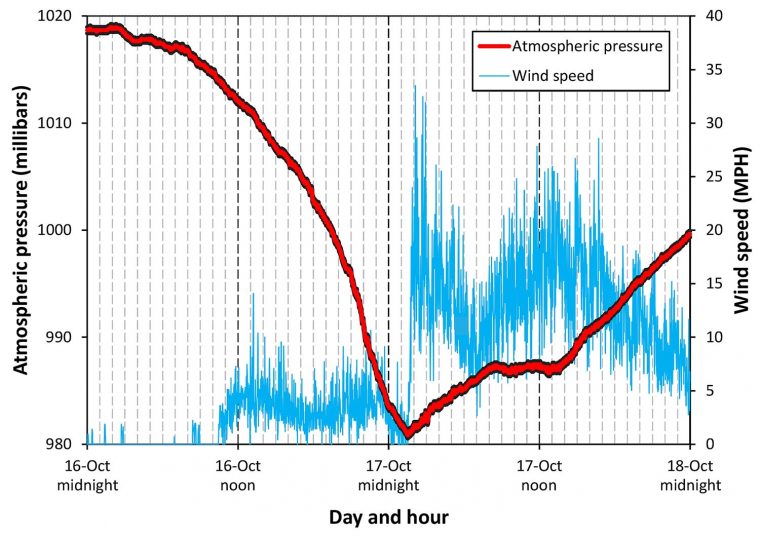On Oct. 17, the Wesleyan Weather Station recorded a dramatic drop in atmospheric (barometric) pressure—a drop so severe it compared to one from Hurricane Sandy in November 2012. Between 2 a.m. on Oct. 16 and 2 a.m. on Oct. 17, the pressure dropped from 1020 to 980 millibars, resulting in what meteorologists refer to as bombogenesis or a "bomb cyclone." Bomb cyclones are defined by a drop of more than 24 millibars of pressure over less than 24 hours, and here, the pressure dropped 40 millibars. During Hurricane Sandy the pressure also dropped to 980 millibars. "We've looked through the…


